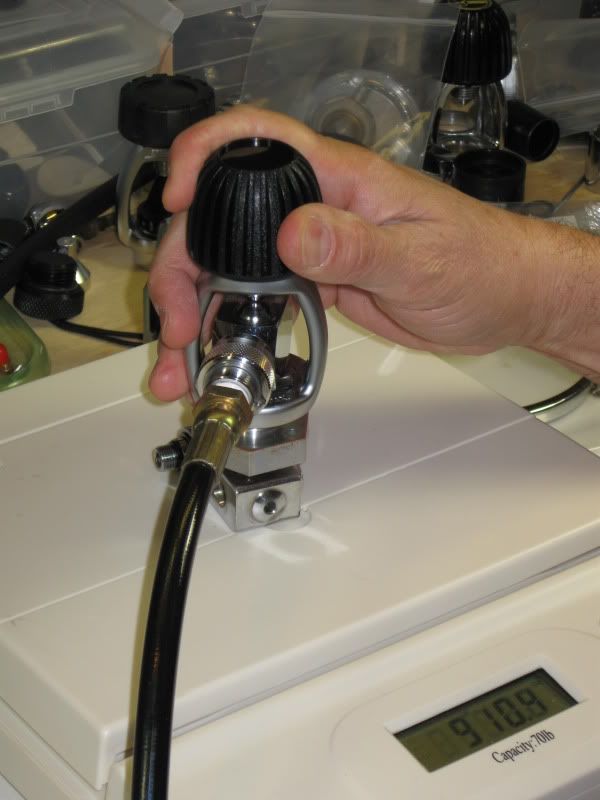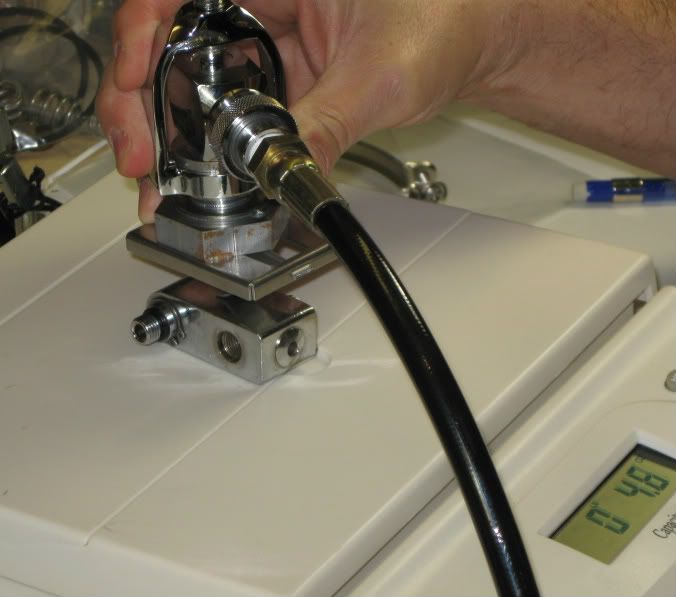Unicorn and Pegasus
Well they are ready for Portage Quarry, Ohio.
I will have a couple of Unicorn I and a couple of Unicorn II at Portage that anyone is welcome to try.
The Unicorns are balanced single stage regulator. The Unicorn II has high pressure ports and an SPG attached. They also have easily adjustable venturi nozzles (one of the Unicorn I also has the adjustable venturi).
One of the Unicorn II also has a modified lever system with a higher mechanical advantage. The cracking effort of this Unicorn II is very good, less than 0.8 inWC, which is the best single stage regulator I have measured. I do have a plan on how to reduce the cracking effort even further (without making it unstable).
All of the Unicorns have a very strong venturi flow. I had to adjust them down or they become positive pressure breather and air is wasted during inhalation.
Due to the very strong venturi, during initial bench testing, I have always had to use modified hose system that easily vented any excess pressure.
Since Unicorns are using a balanced valve, they are not affected by any tank pressure. They perform the same with a 3000 psi tank as they do with an almost empty tank.
I have the first Unicorn I around last year and I have tried it just past 100 ft deep. It performs the same at all the depth I have tried it. A week ago I dove both Unicorn II. One performed great to around 82 ft and the other to around 60ft.
I will also have a couple of variations of the two stage Pegasus, that anyone is welcome to try.
The Pegasus is a modified Voit Titan (similar to the Voit Trieste), but with a modified second stage and using Rob’s plastic cans.
The second stages use a body that Creed made. I modified them slightly to adjust the venturi flow. They have a very good, but predictable, venturi assist.
The two Pegasus have different levers, one with a slightly higher mechanical advantage and a roller contacting the diaphragm. They are both outstanding in breathing performance. I have adjusted the cracking effort to less than 0.5 inWC and the venturi assist immediately drops it well below that (slight positive pressure is not uncommon, but very predictable).
I have done a lot of dives with one of the Pegasus and it has been a great regulator.
In addition, I will have one Trieste in a plastic can with the large diaphragm. It also performs great.
I would like to thank Captain and Herman for their help with machining parts and Creed for the part he made.
Below are a few pictures. I will be adding more pictures later and Allan will try to take some pictures of them in action.
Here are a couple of pictures of the Unicorn II:

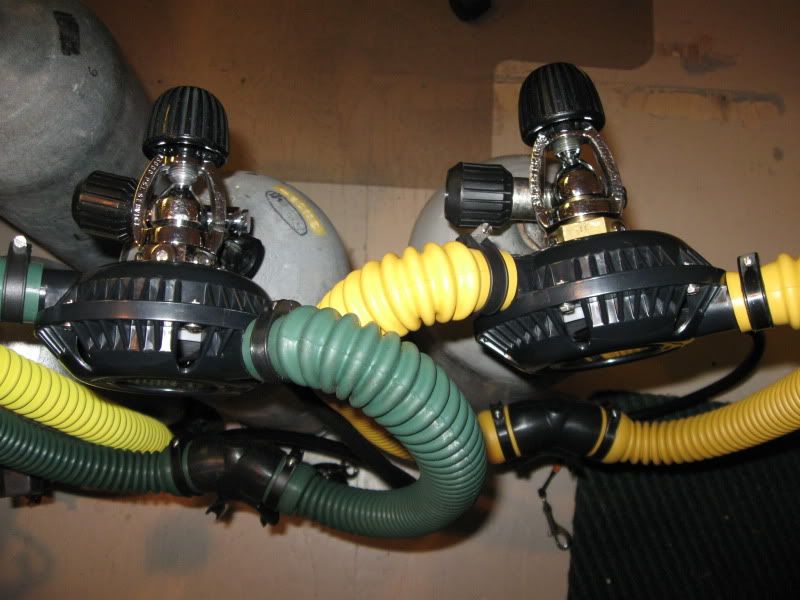
Here is a picture of the original Unicorn I during the early pool test. I was calling it the Hurricane at the time, but then I remember that there is a single hose regulator name Hurricane.
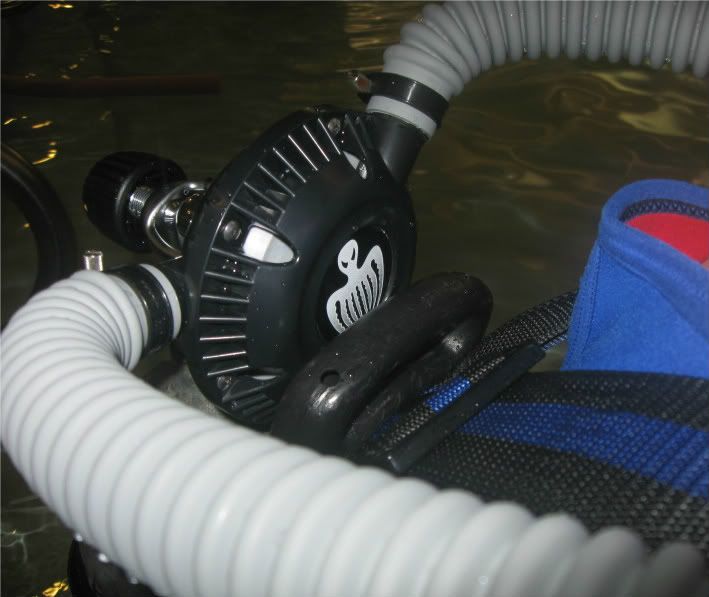
Here is a modified Trieste.
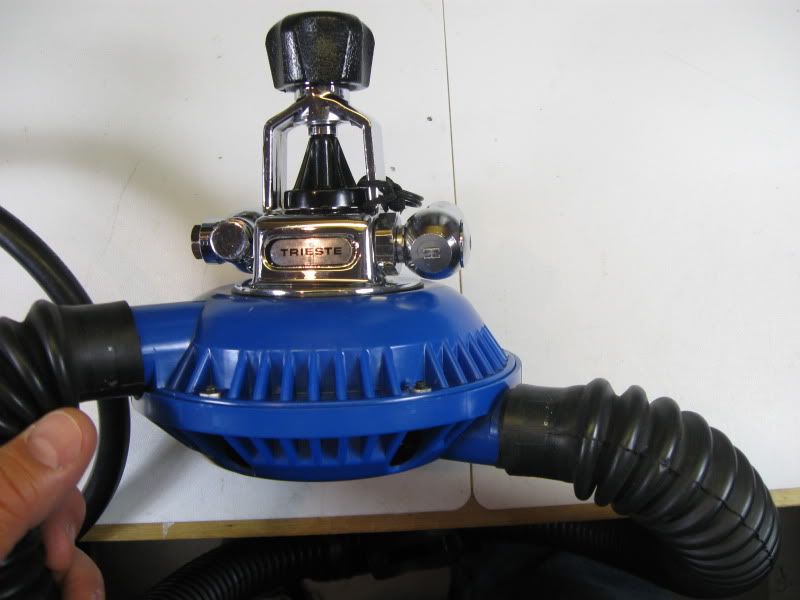
Well they are ready for Portage Quarry, Ohio.
I will have a couple of Unicorn I and a couple of Unicorn II at Portage that anyone is welcome to try.
The Unicorns are balanced single stage regulator. The Unicorn II has high pressure ports and an SPG attached. They also have easily adjustable venturi nozzles (one of the Unicorn I also has the adjustable venturi).
One of the Unicorn II also has a modified lever system with a higher mechanical advantage. The cracking effort of this Unicorn II is very good, less than 0.8 inWC, which is the best single stage regulator I have measured. I do have a plan on how to reduce the cracking effort even further (without making it unstable).
All of the Unicorns have a very strong venturi flow. I had to adjust them down or they become positive pressure breather and air is wasted during inhalation.
Due to the very strong venturi, during initial bench testing, I have always had to use modified hose system that easily vented any excess pressure.
Since Unicorns are using a balanced valve, they are not affected by any tank pressure. They perform the same with a 3000 psi tank as they do with an almost empty tank.
I have the first Unicorn I around last year and I have tried it just past 100 ft deep. It performs the same at all the depth I have tried it. A week ago I dove both Unicorn II. One performed great to around 82 ft and the other to around 60ft.
I will also have a couple of variations of the two stage Pegasus, that anyone is welcome to try.
The Pegasus is a modified Voit Titan (similar to the Voit Trieste), but with a modified second stage and using Rob’s plastic cans.
The second stages use a body that Creed made. I modified them slightly to adjust the venturi flow. They have a very good, but predictable, venturi assist.
The two Pegasus have different levers, one with a slightly higher mechanical advantage and a roller contacting the diaphragm. They are both outstanding in breathing performance. I have adjusted the cracking effort to less than 0.5 inWC and the venturi assist immediately drops it well below that (slight positive pressure is not uncommon, but very predictable).
I have done a lot of dives with one of the Pegasus and it has been a great regulator.
In addition, I will have one Trieste in a plastic can with the large diaphragm. It also performs great.
I would like to thank Captain and Herman for their help with machining parts and Creed for the part he made.
Below are a few pictures. I will be adding more pictures later and Allan will try to take some pictures of them in action.
Here are a couple of pictures of the Unicorn II:


Here is a picture of the original Unicorn I during the early pool test. I was calling it the Hurricane at the time, but then I remember that there is a single hose regulator name Hurricane.

Here is a modified Trieste.





